Making sense of botanical names of plants
The conundrum
Latin botanical names of plants is an area which many gardeners simply bypass as being too complicated to consider and I admit that for a long while I simply learned the names without any understanding of what they meant. But at last the lights came on and I have begun to gain some insight. So here are some basic points that helped clarify my baffled brain.
Surnames and First names
Botanical plant names consist of two words. The first word describes the 'genus' or group name of the plant. I think of this as the surname which is written first as it is on a list of children in a classroom or students in a lecture at college, for example: Smith; John
The second word in each case I equate with a person's first name, it being specific only to the particular person (or plant) in question.
Surnames
Most surnames or family names of people have a meaning that denotes a description: Johnson - son of John; Miller - occupation; Hill - from the hill. So too, do the names of plant groups. Dietes for example, means 'having two relatives'.However, I am not going to go into the meanings of family names as yet. I am still learning to decipher the species names. I just accept the family name as it is for now, and if you are as much of a beginner as I am, I would suggest that you do the same.
More to the point, is to recognise that in the genus (or 'group') Dietes, there are 6 species (or 'members'):
Dietes bicolor; Dietes grandiflora, Dietes iridoides, Dietes robinsonia, Dietes flavida and Dietes butcheriana.
All these members have the 'surname' Dietes, but each one has its own specific first name.
First names
It is these names that drew my interest because they are often decipherable. These words describe some outstanding feature of the plant such as the size, shape, flower, leaf, growth habit or colour, or the place the plant comes from, or the name of a person. Back to Dietes. Dietes bicolor is the Dietes with two colours; Dietes grandiflora is the Dietes with big flowers and Dietes Robinsonia is named after somebody with the surname Robinson.
So let's get some order from this chaos!
Names of people
These are the easiest to recognise. Here are a few:
robinsonia, nelsonii, pearsonii, thompsoniae, woodii, meyeriana, josephinea, mackenii, ecklonii, rogersii
It doesn't take too much of a mental stretch to recognise these as latinised names of people.
Names denoting the origin of the plant
Here the country or area in which the plant is found is also latinised, but fairly easy to decipher:
capensis; afra, africanis australis, natalensis, delagoensis, canadensis, mexicana, abyssinica, asiaticus, brittanicus
Names bearing a similarity to English root words
Bear in mind that many English words were derived from Latin in the first place. With a little twist of the brain one can recognise the Latin meaning from the root of common English words.
- leaf: folia, folium, phylla – think foliage.
- flower: flora
- big: macro, magna, mega, maxi, giganti, grandi, majus
- small: micra, minima, micro, minor
- shape: longi (long), rotundi (round), ovali and ovata (oval), lati (wide), brevi (short)
- growth habit: densi (dense), compacta (compact), arrectus, erectus (upright), pendula (hanging), postrata (prostrate)
- thorns: spinosa, spicata
- smell: fragrans, foetida, odorus, odorata
- habitat: frigidus, alpina, arctica, aquatica, maritima, rivalis ;or rivularis,
- sticky: viscosa, glutinosa
- number: poly, myrio (many), bi (2), tri (3), tetra (6), bundus (abundant)
- serrated: serrata
- crenelate: crenata
Keep going
These are but a few of the words that you can figure out by relating them to English. They may used alone as in Ochna (serrulata), Searsia (crenata), and Cussonia (spicata), or paired, as in Nuxia (flori)(bunda) , Dietes (grandi)(flora) and Dietes (bi)(color).
Of course there many words that one simply can't relate to English and one has to refer to other sources to figure them out. I have found that I am slowly picking up the meanings of some Latin terms because they turn up quite often, like carpa (seed) and pauci (few), but that's for another blog.
Take a break
Here are ten more latin words. See if you can puzzle them out before you look at the answers below.
deliciosa, elegans, dentatus (think dentist), somnifera, flaccidus, columnaris, contortus, gracilis, robustis, ascendens
Going further - Useful websites
If you are looking for the meaning of a specific botanical Latin word, look at http://davesgarden.com/guides/botanary. You'll find most words you need as well as the pronunciation.
If you want to browse through a list of botanical names and their meanings, this site has a comprehensive list: http://alumnus.caltech.edu/~hollin/botany/latin/dictionary.htm
deliciosa – delicious, elegans - elegant, dentatus (think dentist) - toothed, somnifera – causing sleepiness, flaccidus – flaccid, limp, columnaris - column-shaped, contortus - contorted, gracilis - graceful, robustis - robust, ascendens – ascending, climbing


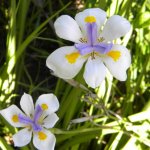
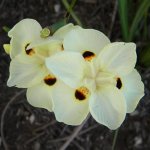
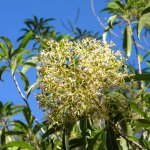
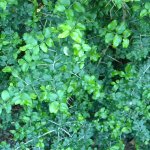
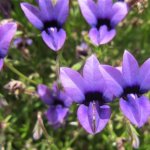
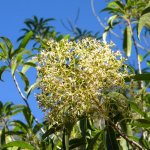


Comments
Searching for names
Nice website - thank you.
My website
Hi Paddy
Thanks for your comment - it's pleasing to get positive feedback.
Lorraine
Making sense of botanical names
What a fabulous explanation. I often have people comment on how difficult it is to simplify botanical names . You have really given a very useful tool to this end. I will definitely refer people to your site. Well done!
Regards Ann
Botanical names
Hi Ann
Many thanks for your comment. I really enjoyed writing this post and will be most gratified if it helps to 'clear the mud'. I plan to do a follow-up sometime in the future, covering some of the words that crop up frequently but are not so easily deciphered.
I really appreciate the feedback.
Kind regards
Lorraine
Botanical Names
Dear Lorraine
Thank you for a most informative website. As far as botanical names are concerned I find them to be preferable and less liable to cause confusion with their ID than the plethora of common names often associated with a plant. And as you point out they often (but not always especially when named to honour a person) relate to a distinguishing feature of the plant.
With best wishes.
Adam
Hi Adam
Hi Adam
I agree that the botanical names are more specific but most visitors to the nursery prefer a common name which is easier to relate to. But as you know, some common names refer to a number of different plants and this can cause a great deal of confusion - not to mention some of the indigenous names, where a plant may have up to ten different names within one particular language!
Regards
Lorraine
Botanical names
Hi Lorraine,
This was most informative, thank you. Please help: of the six pics shown, what is the shrub ( small tree?) in the lower right hand corner called. It looks a lot like a plant I had in my previous garden and I would love to plant another one. Regards, Merle
Titles for pictures
Hi Merle
Thanks for visiting the site.
The shrub is called Searsia crenata(old name Rhus crenata). See http://kumbulanursery.co.za/plants/searsia-crenata for more information.
You can mouse over the pictures above (or any picture on this website) for names and comments about the plants.
Kind regards
Lorraine
Searsia Crenata
Hi Lorraine,
Thanks for your prompt repsonse. I am using an I-pad and did not realise that I could put my finger on a picture and get the same result as with a mouse :-( . I am 70 and a little technologically 'challenged'. Two more questions: what is the reason for the question marks in the detailed description of the plant and, if I cannot find it in Jhb where I live, do you have stock. Regards, Merle
Dune crowberry
Hi Merle
I'm impressed - not many older folk have managed to keep up with the constant and rapid change in communication technology.
The question marks can also be 'moused' or in your case, 'fingered' over, and will provide a description of the terms used, plant sizes and so on.
I went through the plant lists of most of the indigenous nurseries in Johannesburg but so far have not found one that stocks this plant. It is very much a coastal plant and it is unlikely to survive either icy winds or any frost at all.
I do have the plant in stock but it does not travel well by post. The best I can suggest is that you get in touch with any of the following nurseries, who deal with a wholesaler in George (Newplant) that carries Searsia crenata. They may be prepared to order the plant for you.
Witkoppen Nursery - Johannesburg/Bryanston - 011 561 0262
Lifestyle Family Garden Centre - Johannesburg/Northcliff - 011 792 5616
Simply Indigenous Nursery Pretoria/Skeerpoort 012 207 1077
Petal Faire - Pretoria/Colbyn - 012 342 5762
Kind regards
Lorraine
Add new comment